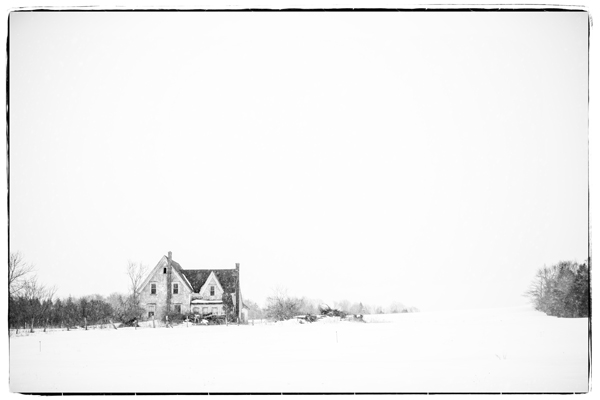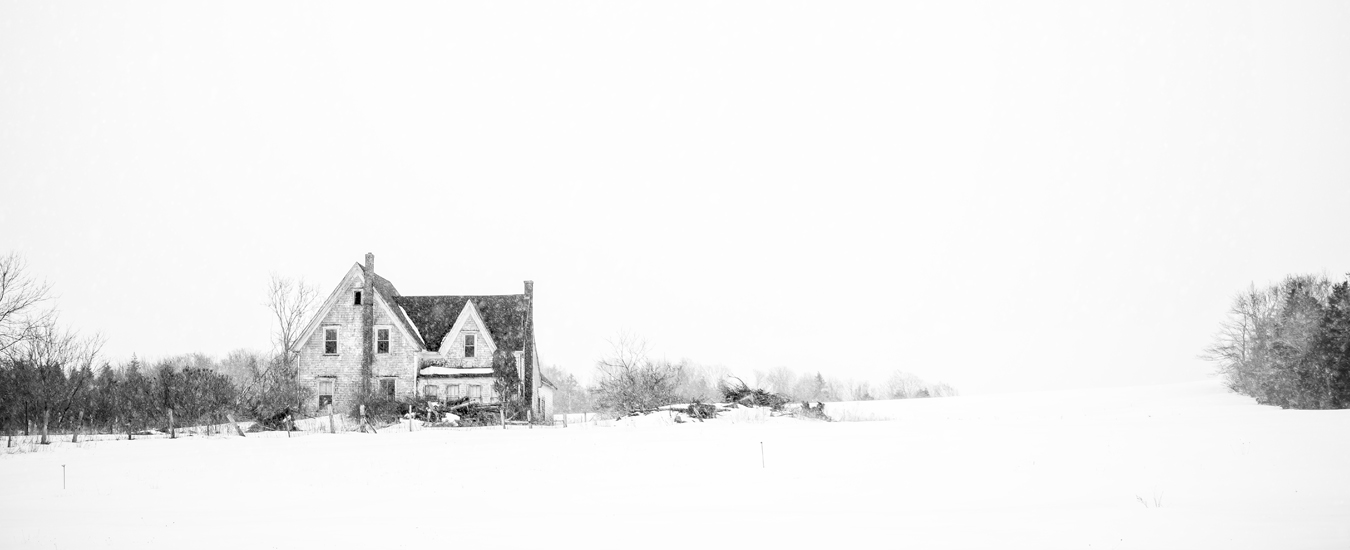I’m always making pictures, even when I’m not taking pictures. I view everything I look at with photography in mind. Subconsciously, my brain constantly makes decisions about camera angles and composition, depth of field, light, and shadow. It never really stops. Since I love photography and the photographic process, I’m not calling this a disorder. An affliction maybe, but not a disorder.
Recently, I was travelling to Stanhope, P.E.I., to photograph a recent Saltscapes story. I always try to get on the road early so I have extra time if I see something I want to photograph. On this drive from my studio in Pictou, N.S., to my destination in P.E.I., I didn’t stop at all. It was beautiful and sunny, and as expected I saw lots of interesting sites, but nothing that made my foot move to the brake.
The drive home was different. The island was now overcast, dim, and shadowless. Light snow had started to fall, and I had nearly 3.5 hours of driving ahead. My maps app had chosen a slightly different rural route out of Stanhope than it had for me coming in. I drove past an abandoned farmhouse, only catching a quick glance. Even in the dim light, it caught my attention, but my foot stayed firmly on the gas. The image, however, was staying with me and wasn’t quickly fading like other scenes I had passed.

I started manipulating the scene in my mind. Foot on the gas. I liked the shape of the house against the flat barren terrain. Foot on the gas. But the overcast sky was flat and boring. Foot on the gas. The scene spoke to desolation and isolation, but the straight lines and peaks of the house also spoke to strength in the face of it. Foot still on the gas. Then my mind flipped the image to black and white, leaning toward stark, graphic, minimalist photography.
Foot now on the brake.
Even though it had already been a long day with lots of road left to travel, I turned back. I only stayed for five minutes taking photographs from the side of the road. The whole exercise added 15 or 20 minutes to my trip.
I’m happy I went back. As I hoped, the scene at that time of day and in those conditions did lend itself to black and white. It does convey isolation with a featureless sky blending into a nearly featureless terrain. But to me, an important part of the photo is the inclusion of the small group of trees on the opposite side of the scene, included because it teases there might be more beyond the frame. Another homestead perhaps. A neighbour. A hint that the isolation is only perceived. With some effort behind it, a minimalist photo can really say a lot!
